
9 minute read
Special Feature – Living the legend
LIVING THE LEGEND
A bootlegging heritage has been crafted into a boutique distillery — producing whisky from paddock to bottle.
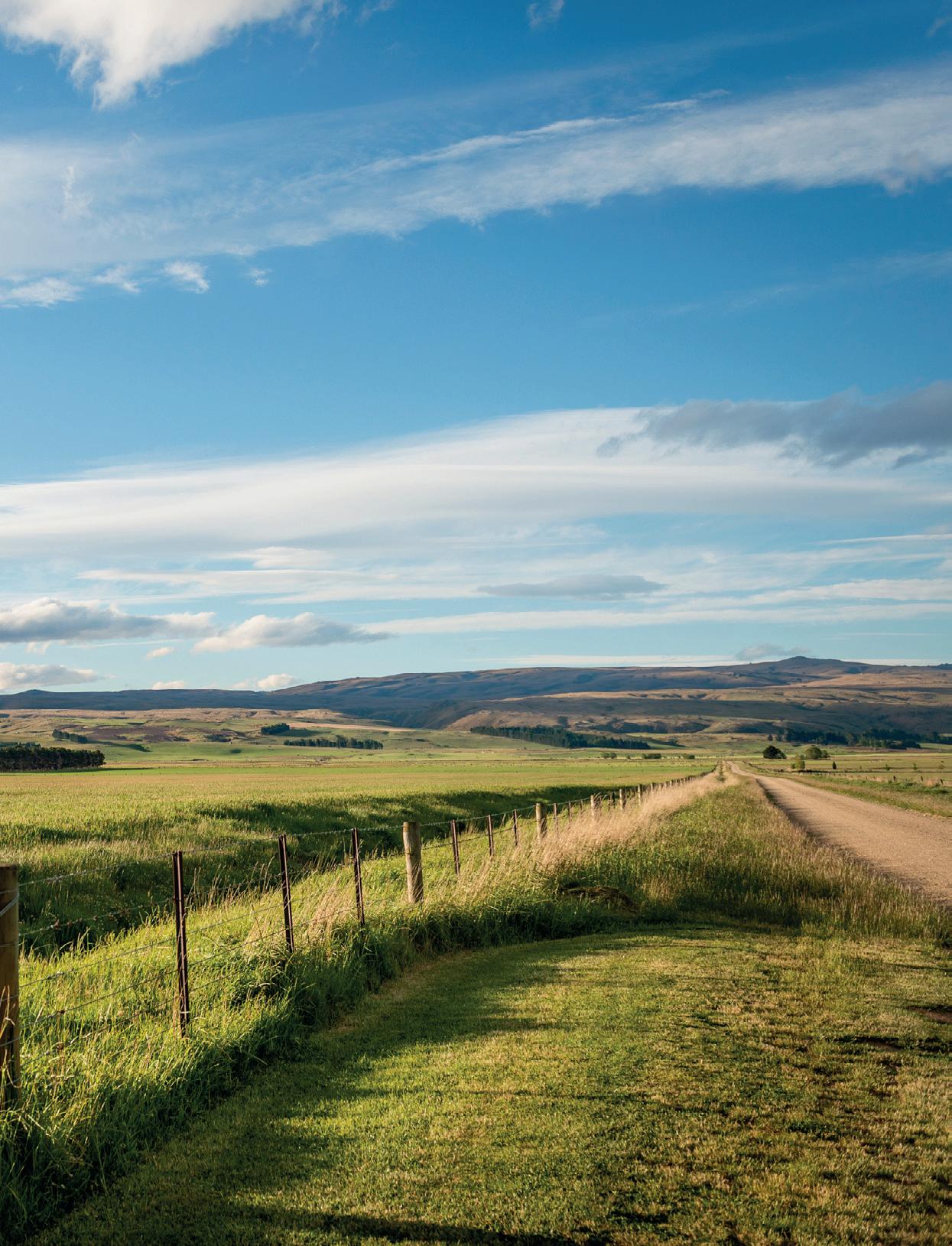
| Lammermoor Distillery, Maniototo.
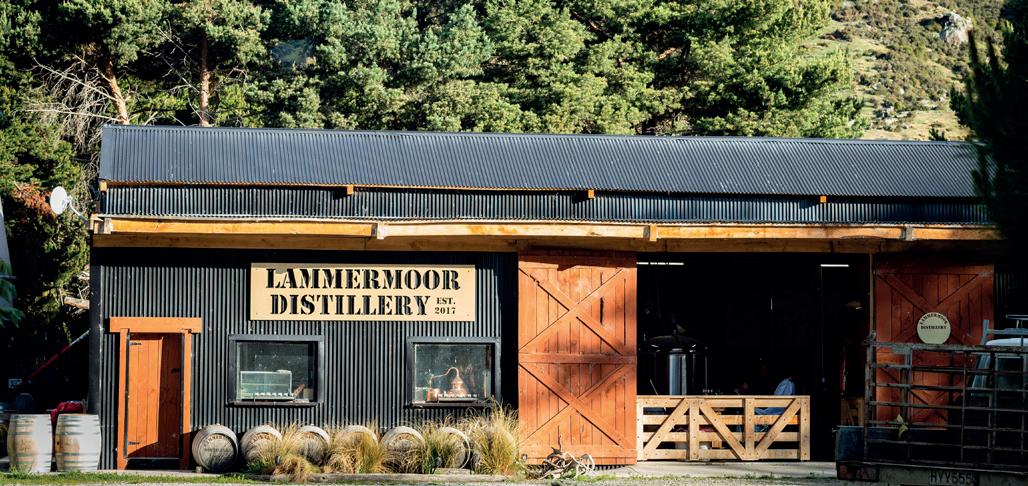
| John and Susie Elliot.

Situated on 5,400 hectares of high country in the southern end of the Maniototo, Lammermoor Station is steeped in history with distilling at its heart.
Lammermoor Station has been in the Elliot family for almost a century, originally bought by Andrew Elliot in the 1900s before being passed on to his son Robert. Robert’s son John Elliot and his wife Susie now farm the land.
Legend has it that back in the 1860s gold rush era there was a distillery hidden in the Lammermoor Range, run by an illegal moonshiner who would supply the goldminers and prospectors as they travelled the Dunstan Trail and made their way into the interior of Central Otago. While livestock and cropping are the bigger part of the farming operation with 19,800 stock units on the property, history is now repeating with liquid gold again flowing from Lammermoor — this time in the form of a high-end boutique whisky and gin distillery.
| The Elliots have now produced 58 barrels of whisky at various maturities.

Distilling history
Reviving Lammermoor’s distilling history has never been far from John and Susie Elliot’s minds. Although the original distillery was no longer functioning the land still held secrets of the past. John recalls the story of his grandfather finding the original gold rush still shortly after his return from World War One. Andrew had stumbled across the original still while sheltering from a snowstorm, but with no landmarks of significance the copper still has never been found again. Susie says they have mustered for years on horseback and never found it, but they do keep an eye out just in case. In 2016 the family decided the time was right to bring the legend of Lammermoor Distillery back to life. The distillery began with John and his 'Kiwi no.8 wire’ attitude. From hand milling the station’s trees into planks to fit the design and construction of the building, the entire distillery was built by John, with the occasional help of family and with materials sourced from the land around it.
“We are extremely passionate farmers and we wanted an interest that was still on the farm, reflecting the character of the district and adding value to our farming operation,” John says. “The farming market is very receptive — we have always looked for sustainability and diversity.” By 2017, the Lammermoor Distillery was alive again and this time, fully legal. The first commercial whisky run from the Lammermoor Distillery made its debut just before Christmas, with earlier trial samples receiving rave reviews, including from international gurus. Susie says it is important they remain in control of their product the whole way, from growing and processing their own organic grain, right through to bottling. “We had a vision to create a uniquely Kiwi range of different premium gin and single malt whisky expressions which include a manuka smoked whisky and Otago peated single malts. “For us it has been about developing a unique niche market from paddock to bottle or farm to glass and being part of the journey right to the end. “Many of our lambs and cattle leave the farm and we never know what happens next. This is about the entire journey and wanting to stay in the picture for a bit longer.”
From the ground up
Lammermoor is one of the few distilleries in the world to grow its own grain and malt, mash, ferment, distil and mature on site. The barley is grown on the station, the peat is gathered from the shores of the Great Moss swamp, the manuka harvested from the Maniototo, fresh spring water runs from the hills and the barrels are sourced from local Central Otago vineyards. Even the spent grains from the distillery are recycled, feeding a herd of Berkshire heritage pigs that are sold as weaners to the pork market. John's ‘can do’ farmer’s attitude is reflected throughout the distillery. After being told it would be too difficult to do their own malting on-site, John tracked down the owners of two Vallero Italian drums he had seen abandoned in an engineering yard. Originally used for tanning lamb skins, they are now repurposed to malt the home-grown barley in the distillery. A century old machine from Dunedin’s Bell Tea factory and a RAF WWII Spitfire’s heater are among other recycled machines used to create the spirits. The climatic extremities of Central Otago are key to round, full whisky flavour, increasing the maturation process by the variation in daily temperature.
| Lammermoor is one of the few distilleries in the world to grow its own grain.
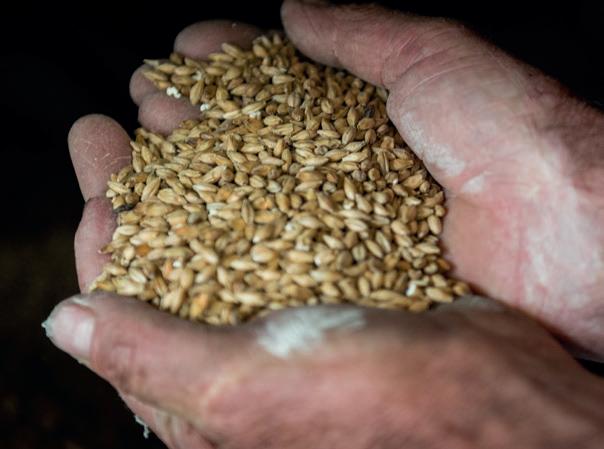
| Two Vallero Italian drums were repurposed to malt the home-grown barley in the distillery.
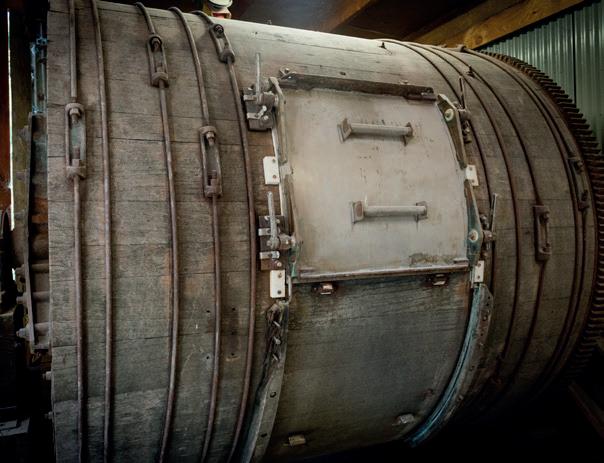
| John Elliot shows a century old machine from Dunedin's Bell Tea factory.

| Susie’s side project of distilling gin has developed a range of sloe gin, pink strawberry gin, blue gin and the original ‘Gin and Bare it’ label.

“For years we cursed the weather which has such extreme variations from -10 degrees C in the morning to 8 degrees C in the afternoon,” John says. “The weather rules our lives. Central Otago is a land of extremes. Traditionally it is the coldest, driest part of New Zealand with sharply defined hot summers and cold winters. “So, while our environment can be pretty harsh and unforgiving it is a wonderful climate for making whisky.” At its highest point Lammermoor Station is 3,300 feet above sea level and the variations continue across the property where rainfall can be recorded at 42 inches at the back of the station and 26 inches at the house. The Elliots rely on their irrigation systems, three hard hose guns, three Roto rainers, K-line and a pivot spread across their home farm and another two finishing blocks for safe guarding winter crops, saying the difference between a great season and a bad one can be one good rain with irrigation offering a level of protection.
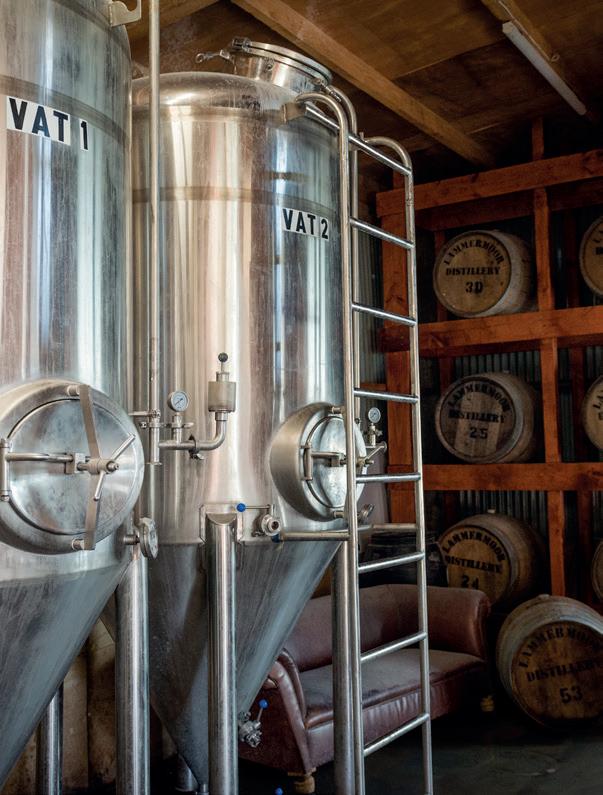
A go-to tipple
Gin making was Susie’s idea and she did her homework before launching into the boutique business. “I did a lot of reading and playing around to get it right. I got great support from whisky and gin makers in Tasmania. When I first visited Tasmania 4 years ago there were 13 distilleries. Now there are 44 and they operate 24/7. Whisky making is a massive multimillion-dollar business,” Susie says. Susie’s side project of distilling gin has resulted in a range of sloe gin, pink strawberry gin, blue gin and the original ‘Gin and Bare it’ label.
“We are farmers who understand that everything comes from the land. With four generations spanning 90 plus years of farming we wanted to create true New Zealand spirits with ingredients and character that really do come from the land beneath us.” Susie tries to use local products for the gin botanicals including thyme, berries and sloe berries. The distinctive glass bottle is also a sustainable hit, featuring a lady wrapped around the shape of the bottle surrounded by Peony Roses which grow well in the Central Otago climate. “I always had a vision for the bottle, I wanted it to be pretty and designed it so it could be sustainable and repurposed and used again for oils or a vase or whatever use people could put it to.” The Elliots have now produced 58 barrels of whisky at various maturities using Central Otago pinot noir, sherry and port barrels, with each batch featuring different properties. “Everyone’s palette is different. We have had rave reviews from whisky gurus rating us in the top four boutique distilleries in the world. Our whisky product is a glowing amber in colour and great on the nose with caramels and spices.”
A family affair
Lammermoor is a busy property and a family run operation, with John and Susie’s daughter Brooke Watson and sons Lachie 28, and Duncan 24, all involved. The farm carries 300 breeding cows — run predominantly on the tussock land. Susie rears 300 – 400 dairy-cross bull calves that they buy in at 4 days old, rear, and grow out to 2-year olds. Fine wool production has been part of the station for over 90 years. Lammermoor has shifted from 30 years of straight Merino to halfbreds, a Merino/Romney cross. Duncan has a small Romney stud which produces a good fleece and supports the farm’s philosophy that if you are going to shear a sheep you might as well shear a decent fleece. They are selected for their constitution to meet the challenges of demanding winters. They also have a Southdown flock which Lachie has a managerial interest in. The Southdown’s ease of lambing and early maturing aligns with their finishing programme. About 90 Stud Southdown two-tooth rams are sold annually. Grain production is a large part of the programme at Lammermoor and a small proportion supplies the distillery operation. All grains are certified organic with barley and triticale, a wheat rye corn cross. They are sold as stock food or distillers’ malt throughout New Zealand.
| The distinctive glass bottle design draws inspiration from Peony Roses growing in Central Otago.

| The farm carries 300 breeding cows — run predominantly on the tussock land.

| The Elliots have a 280-acre property near Ranfurly where they finish cattle and also grow organic grain.

In addition, the Elliots have a 280-acre property near Ranfurly where they finish cattle and also grow organic grain. The family have also just purchased an additional 600 acres as a finishing block to complement the rest of the operation.
Sharing ingenuity
The Elliots have a relaxed opinion as to where their venture is heading and have a laid back ‘we will see what happens’ approach. The family do most of their work themselves and acknowledge they are a pretty independent outfit. They see opportunities in back country tourism and also offer garden tours and have regular visits from anglers who trout fish along the 12 kilometres of Taieri River which is a natural boundary on all three properties, with the Loganburn reservoir also offering excellent fishing. They have had more than 3,500 people take part in the distillery tasting tours since opening in 2016. Tours take between 60-90 minutes and provide a history of Lammermoor Station and how the distillery was started with a personal whisky and gin distillery tour. “It’s been a great experience to bring our history alive again. The whisky business is huge overseas and is a growing enterprise worldwide. “We love our paddock to bottle story and while we have been inspired by history, we have enhanced our local resources to create a unique product,” John says.
| Duncan Elliot. | Lachie Elliot.












